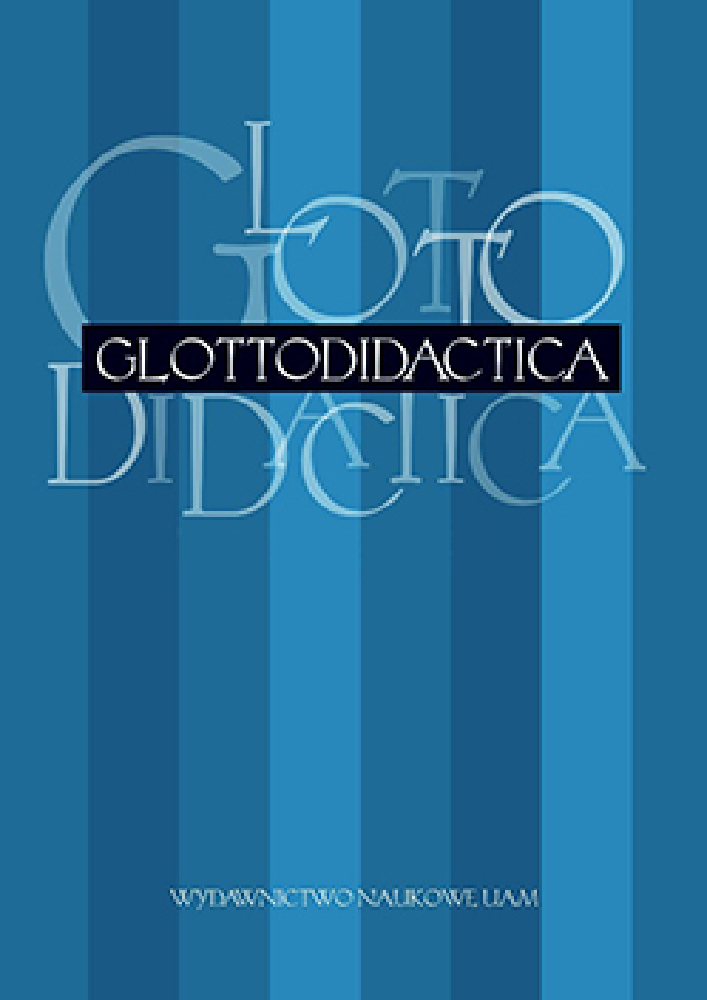Résumé
This paper deals with the pedagogical implications of a series of studies on linguistic awareness. Adult learners, native- and near-native speakers of English were studied for their knowledge of equivalence and contrast relations between reflexive and emphatic -self constructions, on the one hand, and the possible interpretations of French pronominal-verbal constructions, on the other. In the pilot study, adult Francophone learners of English and an Anglophone control group judged the grammaticality of sets of sentences, one of which presented -self constructions that were grammatical as reflexives, as emphatics, as both, or as neither. The original purpose of this combination was to study the relation between objective ambiguity and grammaticality judgments. The results suggested not that syntactic ambiguity led to incorrect grammaticality judgments, but that garden-path (or “hard-to-get”) readings of constructions which globally are asymmetrically ambiguous are associated with incorrect judgments of ungrammaticality. That is, the only reading on which a given sub-type of construction is grammatical can be unknown to learners and even undetected by native speakers.Références
Bever, T.G. 1970: The cognitive basis for linguistic structures. In: Hayes, J.R., editor, Cognition and the Development of Language. New York: Wiley, 279-362.
Birdsong, D. 1989: Metalinguistic Performance and Interlinguistic Competence. New York: Springer.
Botha, R.P. 1973: The Justification of Linguistic Hypotheses: Study of Non-Demonstrative Inference in Transformational Grammar. The Hague: Mouton.
Chaudron, C. 1983: Research on metalinguistic judgments: A review of theory, methods and results. Language Learning 33, 343-77.
Clark, H.H. and Haviland, S.E. 1974: Psychological processes as linguistic explanation. In:
Cohen, D., ed., Explaining Linguistic Phenomena. Washington, D.C.: Hemisphere, 91-124.
Connors, K. 1992: Judging the grammatically of ambiguous sentences in a second language. Paper presented at the XVth International Congress of Linguists.
Connors, K. and Dancette, J. 1990: Text comprehension and linguistic awareness in advanced learners of English. Paper presented at NWAVE XIX.
- 1991: Conprehension de textes et conscience linguistique chez les apprenants d ’une langue seconde. Paper presented at the Annual Meeting of the Canadian Association of Applied Linguistics.
Coppieters, R. 1987: Competence differences between native and near-native speakers. Language 63, 544-73.
Fodor, J.D. and Inoue, A. 1994: The diagnosis and cure of garden paths. Journal of Psycholinguists Research 23, 407-34.
Labov, W. 1972: Sociolinguistic Patterns. Philadelphia: University of Pennsylvania Press.
Levelt, W.J.M. 1974: Formal Grammars in Linguistics and Psycholinguistics. 3 volumes. The Hague: Mouton.
Marks, L.E. 1967: Judgments of grammaticalness of some English sentences and semi-sentences. American Journal of Psychology 80, 196-204.
Pritchett, B.L. 1988: Garden path phenomena and the grammatical basis of language processing. Language 64, 539-76.
Quirk, R., Greenbaum, S., Svartvik, J. and Leech, G. 1985: Comprehensive Grammar of the English Language. New York: Longman.
Rayner, K. and Sereno, S.C. 1994: Regresive eye movements and sentence parsing: on the use of regression-contingent analyses. Memory and Cognition 22, 281 85.
Trueswell, J.C. and Tanenhaus, M.K. 1991: Tense, temporal context and syntactic ambiguity resolution. Language and Cognitive Processes 6, 303-38.
Van Kleeck, A. 1982: The emergence of linguistic awareness: A cognitive framework. Merrill-Palmer Quarterly 28,237-65.
Wamer, J. and Glass, A.L. 1987: Context and distance-to-disambiguation effects in ambiguity resolution: Evidence from grammatically judgments of garden path sentences. Journal of Memory and Language 26, 714-38.
Licence
Auteurs
Les auteurs de textes acceptés pour publication dans la revue Glottodidactica sont tenus de remplir, signer et renvoyer à l'adresse de la rédaction, un accord sur l'octroi d'une licence gratuite pour les œuvres, avec obligation d'accorder une sous-licence CC.
Conformément à cet accord, les auteurs des textes publiés dans la revue Glottodidactica accordent à l'Université Adam Mickiewicz de Poznań une licence non exclusive et gratuite et autorisent l'utilisation de la sous-licence Creative Commons Attribution-NoDerivatives 4.0 International (CC BY-ND 4.0).
Les auteurs se réservent le droit de disposer librement de l'œuvre.
Utilisateurs
Les utilisateurs d'Internet intéressés ont le droit d'utiliser les œuvres publiées dans la revue Glottodidactica depuis 2016, selon les conditions suivantes :
- Attribution – obligation de fournir, conjointement avec l'œuvre distribuée, des informations sur l'auteur, le titre, la source (lien vers l'œuvre originale, DOI) et la licence elle-même.
- Aucune modification – l'œuvre doit être préservée dans sa forme originale. Sans le consentement de l'auteur, il n'est pas possible de distribuer l'œuvre modifiée sous forme de traductions, publications, etc.
Les droits d'auteur sont réservés pour tous les textes publiés avant 2016.
Autres
L'Université Adam Mickiewicz de Poznań conserve les droits sur la revue dans son ensemble (mise en page, forme graphique, titre, conception de la couverture, logo, etc.).
A PARTIR DE L’ANNEE 2015, LES ARTICLES PUBLIÉS DANS LA REVUE SONT DISPONIBLES SOUS LICENCE CREATIVE COMMONS : https://creativecommons.org/licenses/by-nd/4.0/deed.fr




